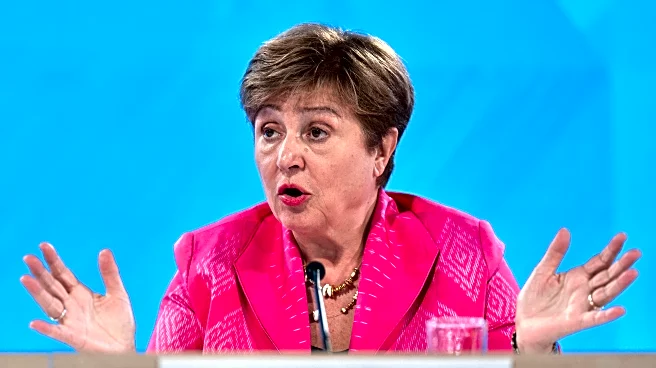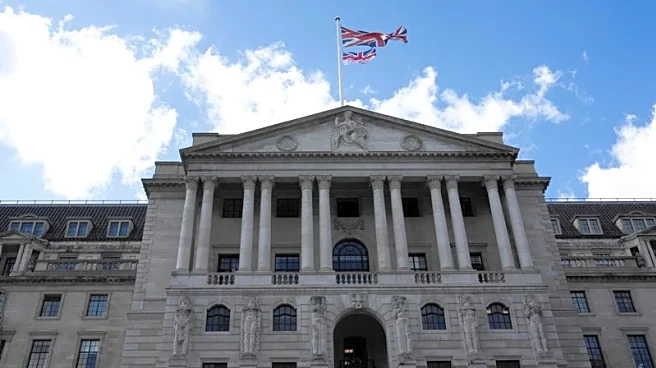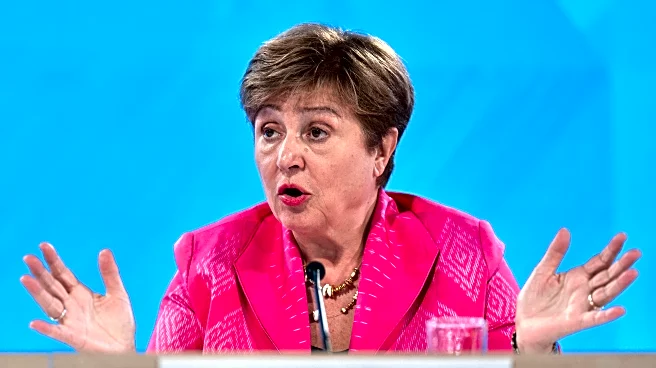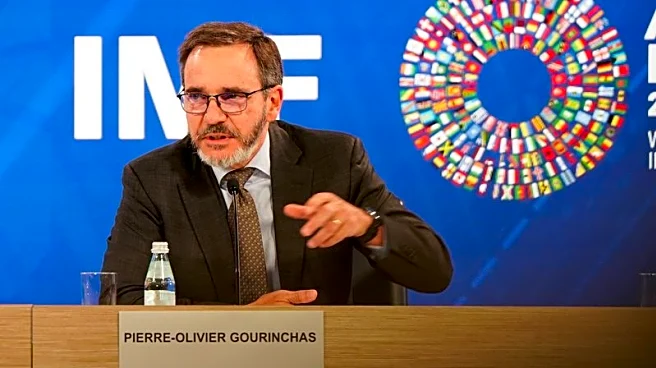What's Happening?
The International Monetary Fund (IMF) has projected the United Kingdom to be the second-fastest-growing economy among the G7 nations for the year 2025. Despite this positive outlook, the UK is expected to face the highest inflation rates within the G7, driven by rising energy and utility bills. The IMF forecasts a 3.4% increase in prices this year, with a slight decrease to 2.5% in 2026, and anticipates inflation to fall to 2% by the end of next year. The UK's economic growth rate is predicted to be 1.3% for both 2025 and 2026, outperforming other G7 economies except the United States. This growth is attributed to strong activity in the first half of 2025 and an improved trade outlook, partly due to a new US-UK trade deal.
Why It's Important?
The IMF's forecast highlights the UK's resilience in the face of global economic challenges, including trade tensions and geopolitical uncertainties. The projected growth could bolster confidence in the UK's economic policies and attract investment, despite concerns over inflation. However, the high inflation rates may impact consumer spending and business costs, potentially affecting economic stability. The UK's ability to manage inflation while sustaining growth will be crucial for maintaining its competitive edge within the G7.
What's Next?
The UK government may need to implement measures to control inflation and support economic growth. This could involve policy adjustments to address rising energy costs and enhance trade relations. The IMF's forecast may influence government strategies and economic planning, with potential implications for fiscal policy and international trade agreements.
Beyond the Headlines
The IMF's report underscores the importance of trade deals in shaping economic outcomes. The US-UK trade agreement is a key factor in the UK's positive growth outlook, highlighting the role of international cooperation in economic recovery. The report also suggests that managing inflation will be a critical challenge for the UK, requiring careful policy interventions to balance growth and price stability.













